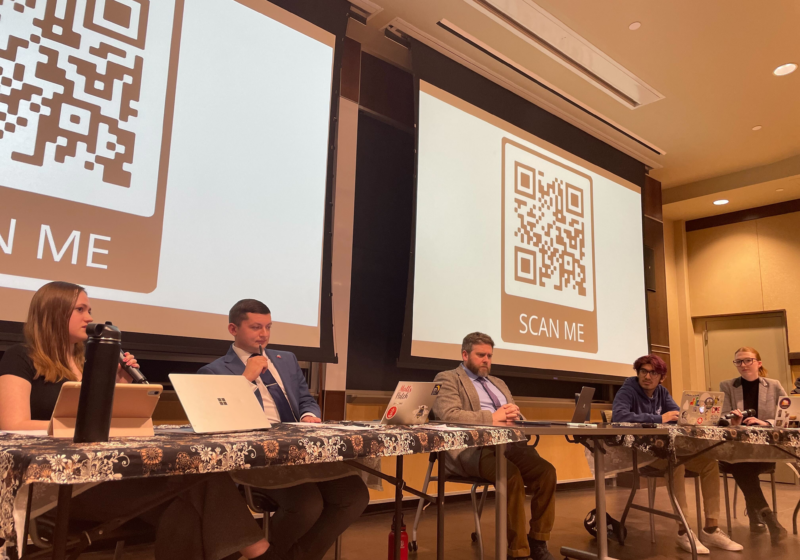A team of astronomers at the University of Rochester has discovered a strange object in the sky. By observing an unusually long eclipse of a star in the southern constellation Centaurus, they have found a planet with a ring system 200 times as large as Saturn’s.
The star, J1407 (a shortened of the much longer official name 1SWASP J140747.93-394542.6), is one of hundreds of young sun-like stars that were discovered during a Ph. D research project led by Mark Pecaut at UR. The goal of the research was to examine sun-like stars around 10 to 20 million years old. This is the time period during which planetary formation is at its peak – when new solar systems are being born.
“As in a lot of things in science, we were actually studying something else when we noticed the rings,” Associate Professor and astronomer Eric Mamajek, who led the team that found the rings, said. “I had noticed in December of 2010 that the consortium SuperWASP had made their data publicly available, so I asked Mark Pecaut to cross-reference our sun-like stars through this sample. ”
SuperWASP uses ground-based telescopes to hunt for exoplanets by measuring the change in light from stars. If a planet orbiting a star passes between us and its star, a dip in the brightness of the star is seen. This is what SuperWASP was looking for, and Mamajek wanted to use that information to measure the rotation periods of the stars to better our understanding of the stellar evolution of young stars.
When Pecaut returned with the data, one object stood out from the rest. All but one of the graphs of the starlight matched the sinusoidal signals they expected to see from the sunspots’ rotation.
The star J1407 seemed to have an abnormal pattern going on. The light curve was very messy.
It had dimmed 95 percent at its minimum brightness, and during the weeks before and after that it was behaving very badly. One day the star would be at 30 percent, then 60 percent, then 20 percent, then 0 percent (back to normal light level, without any obscuring), then to 50 percent again.
“Right away we could tell something very odd was going on,” Mamajek said. He put the printout of the light curve on the wall next to his desk for the next few weeks. The eclipse’s symmetry stuck out. Where it dimmed and then brightened on one side of the minimum, it brightened and then dimmed at the same spot on the other side. “It reminded me of the transit of Uranus’ rings back in 1977. Uranus’ rings were discovered in this same way, by watching the light curve of a star it passed in front of.”
After eliminating potential errors such as background noise, the only explanation for the odd behavior of the light curve left was a gigantic ring system around a planet passing in front of the star. The eclipse lasted 56 days, meaning that the ring system was over 150 million kilometers in diameter and therefore larger than the distance from the Earth to the Sun.
Since it was the first exoplanet discovered around the star J1407, the exoplanet was given the official name J1407b. Other nicknames, including “Meliora” and “Draupnir,” were thought of by the team.
Objects like J1407b are not as uncommon as one may think. Around 1 in 1,000 Jupiter-sized planets around young stars like J1407 have similarly large ring systems.
When our solar system was only around 10 to 20 million years old, Jupiter and Saturn most likely had large ring systems surrounding them. The material in the rings coalesced over millions of years into the huge Galilean moons around Jupiter, leaving a small ring system behind. Around Saturn, the rings coalesced into small moons like Titan, Enceladus and other smaller moons, leaving a bigger ring system behind despite starting with less ring material than Jupiter.
If the material in Jupiter’s moons were ground up into dust and spread out in a ring system around Jupiter, it would stretch some tens of millions of kilometers in diameter and would be practically opaque. J1407b’s rings are over ten times as large as Jupiter’s and have much more material.
There is, however, at least one clear gap in the rings around J1407b, indicating that a moon is forming and sweeping up the material around it as it grows larger. The moon could grow as large as the Earth in the future as it gathers more and more of the ring material. As this happens, the rings around J1407b would grow smaller.
The period of J1407b is estimated to be about ten years. Astronomers are waiting for the next pass of the planet between us and the star J1407. If another 56 day eclipse is observed, the discovery will be further confirmed, and the mass of the planet can be determined more precisely.
Planetary scientists had been hypothesizing planets with large ring systems like J1407b for decades.
“The discovery was just waiting to be made,” Mamajek said.
Rubenzahl is a member of
the class of 2018.



